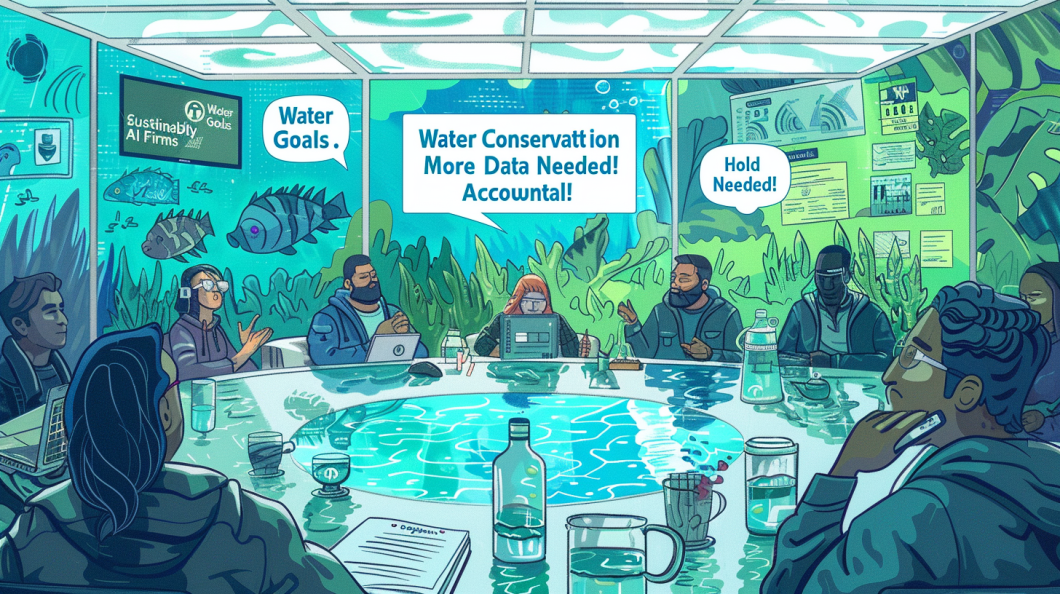Table of Contents
Water Consumption of AI: How Much Water Does AI Consumes?
Artificial Intelligence or AI consumes roughly up to 9 liters of water per kWh of its energy used in cooling towers and air mechanisms to dispatch heat. As artificial intelligence (AI) becomes more integral to our daily lives, the resources required to support it have escalated significantly. Among these resources, water plays a critical yet often overlooked role. To keep the massive data centers that power AI cool, tech giants like Microsoft, Google, and Meta are using vast quantities of water, raising serious environmental concerns.
The Extent of Water Usage by AI
According to a recent study in Nature, the water consumption of AI is projected to reach between 4.2 billion and 6.6 billion cubic meters by 2027. This is equivalent to nearly half of the UK’s annual water consumption. The primary reason for this high water usage is the need to cool the servers that run complex AI models, especially those utilizing generative AI for processing and generating text, data, and other forms of information.
These AI models operate in massive data centers, where chilled water systems absorb the heat generated by the servers. While some of this water can be recycled, a significant amount evaporates, leading to substantial water consumption. Additionally, the production of electricity required to power these data centers indirectly contributes to water usage through energy production methods such as thermal power plants and hydroelectric dams.
Impacts of AI’s Water Consumption

The growing water consumption by AI data centers has several negative repercussions on both the environment and society.
Environmental Impact
The excessive use of water by data centers exacerbates the global water crisis, which already affects over two billion people who lack access to safe drinking water. Furthermore, it intensifies the effects of climate change, contributing to severe droughts, floods, and wildfires that jeopardize ecosystems and human communities.
Social and Economic Impact
The strain on water resources can lead to conflicts and inequalities, particularly in regions where water is already scarce. For instance, in West Des Moines, Iowa, a cluster of data centers hosting OpenAI significantly depleted the local aquifer, reducing water pressure and impacting residents’ quality of life and property values.
Additionally, popular AI services like OpenAI’s ChatGPT are heavy water users. Research indicates that generating responses from ChatGPT could consume as much water as a 500ml bottle for every 10 to 50 prompts, depending on various factors. Newer, more powerful models like GPT-4 are likely to consume even more water, though exact figures are not yet available.
Solutions to Water Consumption of AI Problems
Tech Giants’ Initiatives
Recognizing the issue, companies like Microsoft, Google, and Meta have pledged to replenish more water than they use by 2030. These commitments involve supporting projects aimed at improving water efficiency, conservation, and restoration. Additionally, these companies are investing in renewable energy sources such as solar and wind to reduce their overall carbon footprint and the associated indirect water usage.
Call for Transparency
However, experts argue that these measures are not sufficient. Greater transparency and accountability from AI firms are essential. Detailed disclosures about water consumption and environmental impacts should be made available to the public. This includes data on the water usage of different AI services and models, as well as comparisons with other industries.
Responsible AI Use
AI users and developers must also adopt more responsible practices. Avoiding unnecessary or wasteful AI applications and considering the environmental impact of AI development are crucial steps toward sustainability. Educating users about the water footprint of AI can promote more thoughtful and efficient use of these technologies.
Technological Innovations
Adopting innovative cooling technologies and optimizing existing systems can also help reduce water consumption. For instance, utilizing alternative water sources or developing more water-efficient cooling methods could significantly decrease the environmental impact of data centers.
The Hidden Water Footprint of AI

The water consumption of AI extends beyond the direct cooling of data centers. It includes the substantial water usage associated with generating the electricity required to power these facilities. As AI becomes more prevalent, understanding its hidden water footprint is crucial for developing effective strategies to mitigate its environmental impact.
Towards a Sustainable Future
Disclosing Water Consumption Data
To move towards a sustainable future, AI companies must be transparent about their water usage. Detailed reports on water consumption for each AI model and data center should be made publicly available to ensure accountability and foster trust.
Implementing Water-Efficient Practices
Adopting cutting-edge cooling technologies and optimizing water use can help significantly reduce the water footprint of AI. By prioritizing water-efficient practices, tech giants can lead the way in sustainable AI development.
Aligning AI with Sustainability
AI development should prioritize environmental sustainability. This includes not only reducing water consumption but also ensuring equitable access to water resources. By aligning AI innovations with sustainability goals, we can harness the benefits of AI while minimizing its environmental impact.
Collaborative Efforts
Collaboration between tech companies, policymakers, and environmental organizations is vital to address the water consumption of AI. Joint efforts can lead to comprehensive solutions and policies that promote sustainability and mitigate the adverse effects of AI on water resources.
Conclusion
The growing water consumption of AI poses significant environmental and social challenges. However, with proactive measures, transparency, and responsible practices, the AI industry can mitigate its water footprint. By addressing these issues head-on, we can pave the way for a sustainable future where technological innovation and environmental stewardship go hand in hand. The time to act is now, as the thirst for AI threatens to deplete our most precious natural resources.





